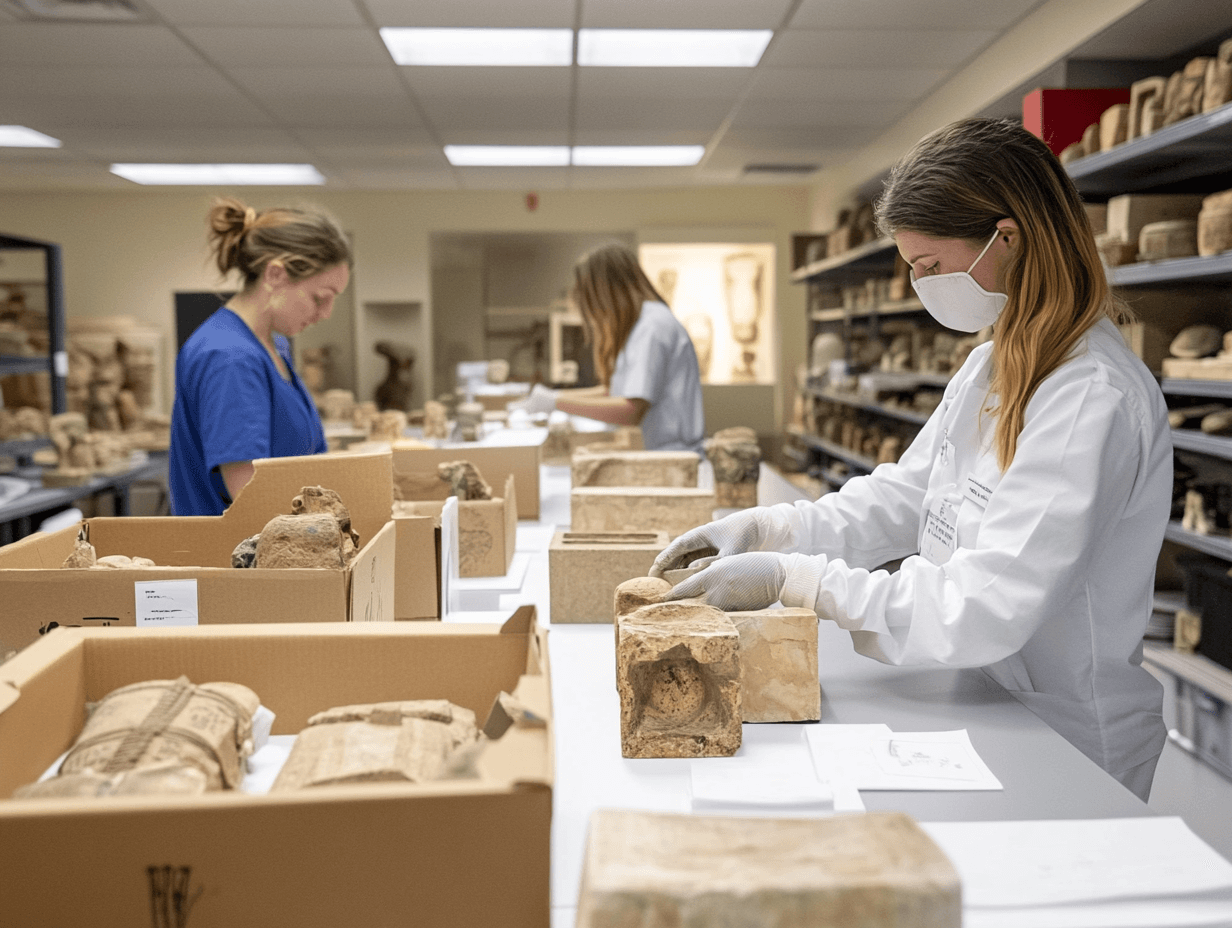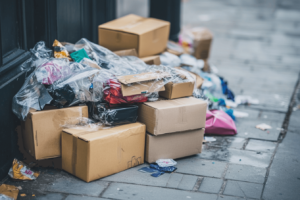The importance of packaging in museum artifacts
Packaging plays a crucial role in ensuring the safety and preservation of museum artifacts. Whether it’s ancient pottery, delicate manuscripts, or intricate sculptures, the right packaging can make all the difference in maintaining the integrity and longevity of these valuable pieces. As museums continue to acquire new pieces and send artifacts to exhibitions around the world, understanding the importance of proper packaging is essential to preserving cultural heritage.
Preserving historical integrity
Artifacts often represent centuries of human history, and once they are damaged, their story is irreparably altered. Effective packaging protects museum pieces from external forces that could compromise their historical significance. For example, light, temperature fluctuations, and humidity can degrade materials over time. A well-designed packaging system accounts for these factors, ensuring that artifacts are shielded from harm, whether they are on display in a museum or being transported.
Protecting against environmental damage
Environmental conditions can be detrimental to artifacts if they aren’t carefully considered. Changes in temperature and humidity are two of the most significant threats to museum pieces. Wooden objects, textiles, and artworks are especially vulnerable to fluctuating conditions, which can cause cracking, fading, or even biological damage. Specialized packaging materials, such as climate-controlled containers and silica gel desiccants, can help regulate the environment, providing a stable atmosphere that minimizes the risk of environmental harm.
Facilitating safe transportation
Artifacts frequently travel across the globe for exhibitions, research, or conservation. During these movements, the packaging serves as the first line of defense against damage. Properly designed packaging ensures that artifacts remain safe throughout the entire process, from handling to shipping. For example, cushioned layers, reinforced boxes, and shock-absorbing materials are often used to mitigate the impact of sudden movements or drops. Additionally, clear labeling and handling instructions are crucial in guiding museum staff and couriers to handle the artifacts with care.

Innovative packaging solutions for artifacts
As the field of museum preservation continues to evolve, so do the methods used to protect artifacts. Innovative packaging solutions now focus on customization, eco-friendliness, and advanced technology to provide the most effective protection for museum pieces.
Customized packaging for fragile pieces
Not all artifacts are the same, and many have unique shapes, sizes, and sensitivities. As such, packaging must be tailored to fit each specific piece. Customized packaging allows for precise, secure placement of artifacts, ensuring they are cushioned properly and supported during transport. This could mean using custom-molded foam inserts, tailored cases, or specially designed crates. Such precision ensures that fragile items, such as glassware or statues, remain safe and undamaged.
Eco-friendly materials in artifact packaging
In recent years, sustainability has become an increasing concern across all industries, and museum packaging is no exception. Traditional packaging materials like Styrofoam and plastic are not only harmful to the environment but can also degrade over time, potentially causing harm to the artifacts they are supposed to protect. As museums strive to be more environmentally conscious, alternative eco-friendly materials are gaining popularity. For example, biodegradable foams, recycled plastics, and natural fibers can all serve as viable substitutes for more harmful options. These materials offer the same protective benefits without the negative environmental impact.
Smart packaging with RFID technology
Another advancement in packaging for museum artifacts is the incorporation of RFID (radio frequency identification) technology. RFID tags allow museums to track and monitor the movement of artifacts in real time. When embedded into packaging, RFID tags can provide a wealth of information, such as the artifact’s location, temperature, and humidity levels. This smart packaging solution helps reduce the risk of loss, theft, or environmental damage during transportation and handling. Additionally, RFID-enabled packaging allows museums to manage their collections more effectively, providing detailed data about each piece’s condition and journey.
Case studies: museum packaging best practices
Several renowned museums around the world have set the standard for effective artifact packaging, employing a mix of innovative solutions and time-tested techniques. These case studies highlight how leading institutions approach the packaging and preservation of their collections.
The Louvre’s approach to artifact protection
The Louvre in Paris, home to one of the most prestigious art collections in the world, takes great care in packaging its valuable artifacts. The museum uses a combination of customized crates and climate-controlled environments to ensure that delicate items like paintings, sculptures, and artifacts from ancient civilizations are kept in optimal conditions. The Louvre has also pioneered the use of reusable packaging systems, reducing waste while maintaining the highest standards of protection.
The British Museum: balancing tradition and innovation
The British Museum in London blends traditional packaging methods with cutting-edge technology to preserve its extensive collection. For centuries, the museum has relied on custom-built wooden crates and cushioned materials to safeguard fragile artifacts. However, in recent years, the British Museum has embraced more sustainable practices, such as using biodegradable materials and exploring RFID-enabled packaging for better inventory management. By incorporating both old and new methods, the British Museum ensures that its collection is protected while also adapting to the evolving needs of the industry.
The Smithsonian: leading the way with sustainable packaging
The Smithsonian Institution, located in Washington D.C., has been a trailblazer in the field of sustainable artifact packaging. As part of its ongoing commitment to reducing its environmental footprint, the Smithsonian has developed packaging solutions that prioritize eco-friendly materials without compromising on protection. This includes the use of recycled cardboard, reusable crates, and natural cushioning materials. Additionally, the Smithsonian collaborates with researchers to explore new sustainable packaging options, constantly pushing the boundaries of what’s possible in artifact preservation.
Challenges in packaging museum pieces
While advancements in packaging technology have made it easier to protect artifacts, there are still several challenges that museums face when it comes to packaging. These challenges can make it difficult to ensure the safety of museum pieces, especially when dealing with unique or particularly fragile items.
Handling irregular shapes and sizes
Many museum artifacts come in irregular shapes and sizes, which can make packaging a challenge. Unlike standard-sized objects, these artifacts require custom solutions to ensure they are supported and protected. For example, a large sculpture may require a specially designed wooden crate with custom-cut foam inserts, while a delicate scroll might need a cylindrical case to prevent bending. Finding the right solution for each artifact can be time-consuming and costly but is essential to maintaining the integrity of the collection.
Addressing the risk of contamination
Artifacts, especially those made from organic materials like textiles or wood, are vulnerable to contamination from dust, mold, and even human touch. Packaging must be designed to prevent exposure to these contaminants. Museums often use sealed containers, air-tight cases, or special wraps to protect against dust and pollutants. Additionally, environmental control features like temperature and humidity regulation are necessary to ensure that contaminants are kept at bay.
Balancing security with accessibility
Another challenge in packaging is finding the right balance between security and accessibility. Artifacts often need to be transported or displayed, and while their safety is paramount, their accessibility is also important. Museums need to design packaging that allows for easy access by conservators or curators without compromising security. This balance can be tricky, as it requires solutions that offer both protection and convenience.
Future trends in artifact packaging
Looking ahead, the future of artifact packaging is likely to be shaped by technological advancements, sustainability efforts, and a growing understanding of the needs of museums and their collections.
Technological advancements in packaging materials
As new materials and technologies emerge, they will revolutionize how artifacts are packaged. Innovations in smart packaging, such as the use of sensors to monitor artifacts’ conditions in real-time, will likely become more commonplace. Additionally, the development of lightweight yet durable materials will help reduce the burden of transportation while still offering robust protection.
The role of artificial intelligence in museum logistics
Artificial intelligence (AI) could play a significant role in improving the logistics of artifact packaging and transportation. AI-powered systems could analyze data from RFID tags and sensors to optimize packaging and shipping routes, ensuring that artifacts are exposed to the least amount of risk during transit. By predicting potential issues, AI could enable museums to respond proactively, further enhancing the preservation of valuable pieces.
Sustainability and ethical considerations in packaging choices
As sustainability continues to be a focal point for many industries, the museum sector will likely continue to prioritize ethical considerations when choosing packaging materials. The shift towards biodegradable and recyclable packaging will only grow, and museums will increasingly look for ways to reduce their environmental impact while still providing the highest level of protection for artifacts.








